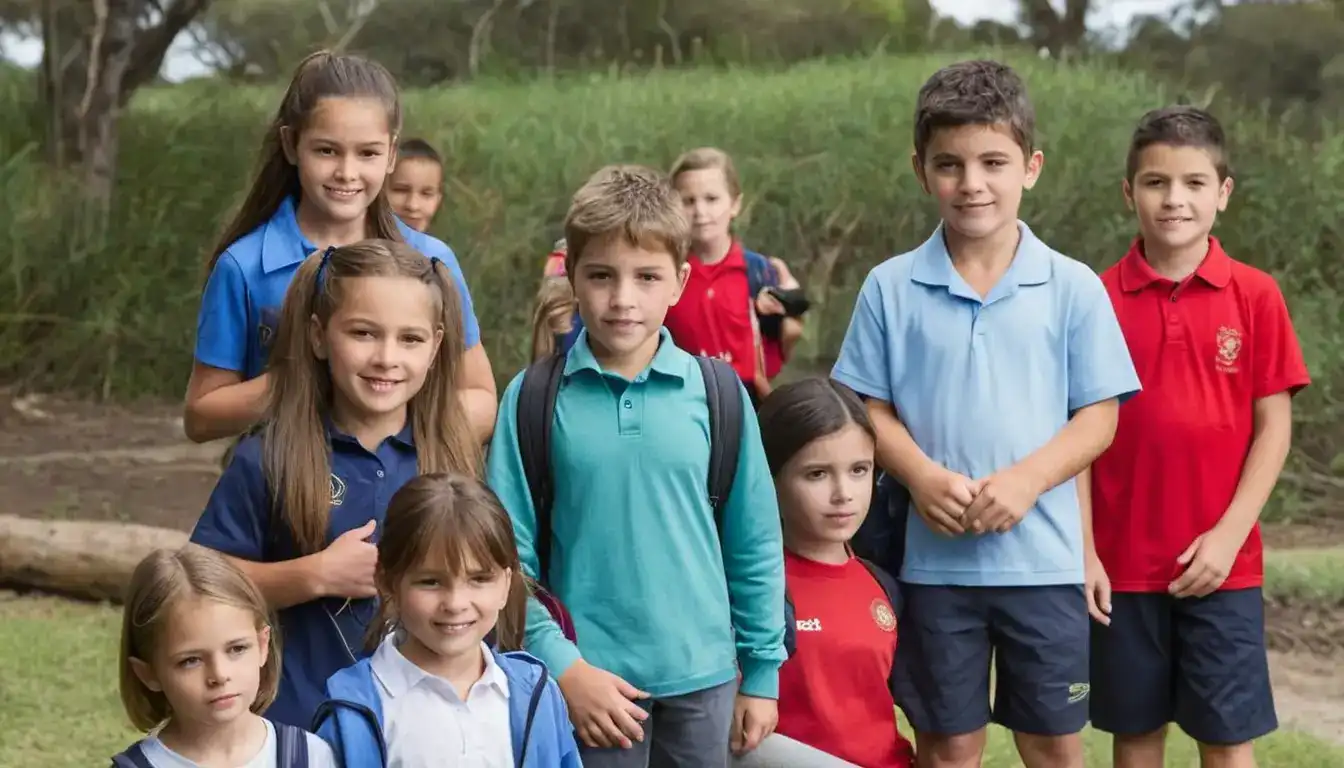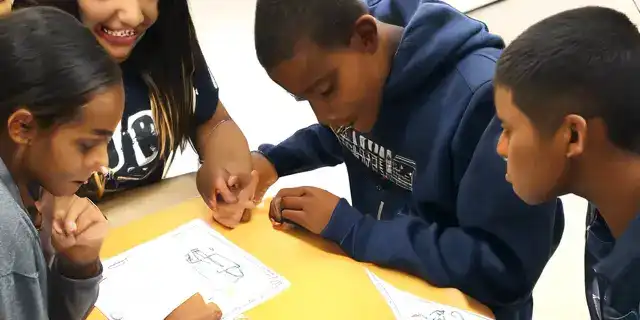How to build your child's confidence in learning
Emily Willis

Photo: How to build your child's confidence in learning
Learning is a journey filled with both triumphs and stumbles. While mastering new skills brings a sense of accomplishment, facing challenges can sometimes lead to discouragement. Here's the good news: you can play a pivotal role in building your child's confidence in learning, empowering them to embrace challenges and persevere through difficulties.
Understanding the Importance of Confidence
Confidence is an essential ingredient for a successful learning journey. Here's why it matters:
- Motivation and Persistence: Confident children are more likely to be motivated to learn new things, tackle challenging tasks, and persist when faced with obstacles.
- Positive Self-Esteem: Confidence fosters a positive self-image, making children believe in their abilities and potential.
- Growth Mindset: Confidence fuels a growth mindset, the belief that intelligence and abilities can be developed through effort and practice. This allows them to view challenges as opportunities to learn and grow.
- Resilience: Confident children are better equipped to bounce back from setbacks and learn from mistakes.
The Enemy of Confidence: Common Challenges
Several factors can hinder a child's confidence in learning:
- Fear of Failure: The fear of making mistakes can lead to avoiding new challenges. Help children understand that mistakes are a natural part of the learning process.
- Comparison to Others: Constantly comparing themselves to peers can be discouraging. Focus on celebrating individual progress and personal bests.
- Negative Feedback: Harsh criticism can damage a child's confidence. Focus on providing constructive criticism that is specific and actionable.
- Lack of Support: Feeling unsupported or misunderstood can stifle a child's motivation. Show genuine interest in their learning and celebrate their efforts.
Building Blocks of Confidence: Practical Strategies
Here are some strategies to nurture your child's confidence in learning:
- Focus on Effort Over Outcome: Instead of solely praising "getting it right," acknowledge the hard work and dedication they put in. Say things like "I see how you're working hard on that problem" or "You never gave up trying."
- Celebrate the Learning Process: Focus on the joy of learning new things and exploring different subjects. Encourage curiosity and asking questions.
- Create a Safe Space for Mistakes: Let children know it's okay to make mistakes. Mistakes are valuable learning opportunities. Help them develop strategies to learn from setbacks and try again.
- Break Down Challenges: Large, overwhelming tasks can be daunting. Break down challenges into smaller, manageable steps. Celebrate each accomplishment along the way.
- Provide Positive Reinforcement: Catch your child "being good learners!" Acknowledge their effort, progress, and successes, both big and small.
- Embrace Different Learning Styles: Every child learns differently. Identify their preferred learning style (visual, auditory, kinesthetic) and cater your approach accordingly. This allows them to learn in a way that feels comfortable and effective for them.
- Create Opportunities for Choice: Giving children some control over their learning can boost motivation. Offer them choices in reading materials, project topics, or presentation formats. This fosters a sense of ownership over their learning journey.
- Focus on Strengths: Help your child identify and develop their natural talents and interests. This builds confidence and provides a sense of accomplishment outside of academic challenges.
- Model a Growth Mindset: Children learn by observing adults. Be open about your own learning process. Share stories about times when you faced difficulties and how you overcame them. Show them that learning is a lifelong journey, not a destination.
- Celebrate Differences: Embrace individual learning styles and strengths. Every child learns differently. Provide opportunities for them to learn in a way that's most effective for them.
Building Confidence Beyond the Classroom
Learning doesn't stop at the school doors. Here are ways to extend confidence-building experiences beyond the classroom:
- Turn Everyday Activities into Learning Opportunities: Cooking can involve measuring ingredients (math), gardening can connect them to nature (science), and grocery shopping can become a budgeting lesson (practical math skills).
- Explore Together: Visit museums, libraries, and zoos. These places offer enriching experiences that bring learning to life. Let children explore exhibits, participate in interactive programs, and ask questions.
- Read Together: Reading is a fundamental skill and a gateway to a world of knowledge. Make reading a regular activity, taking turns reading aloud, discussing the stories, and exploring different genres.
- Encourage Exploration and Experimentation: Provide opportunities for children to explore their interests and experiment with new ideas. This fosters curiosity, creativity, and a sense of self-discovery.
Conclusion: Nurturing Confident Learners and Lifelong Achievers
By implementing these strategies, you can play a pivotal role in building your child's confidence in learning, empowering them to become lifelong learners and successful individuals. Remember, confidence is not about perfection; it's about believing in one's ability to learn, grow, and overcome challenges. When we nurture confidence in our children, we open doors to a world of possibilities, setting them on a path of personal fulfillment and endless achievements.
Additional Tips:
- Set Realistic Goals: Help children set achievable goals and break them down into smaller, manageable steps. Celebrating each milestone along the way boosts confidence and motivation.
- Encourage Self-Reflection: After completing a task or project, encourage children to reflect on their learning process. What went well? What could be improved? This helps them develop self-awareness and problem-solving skills.
- Make Learning Fun and Enjoyable: Learning should be a positive experience. Find ways to make it fun, engaging, and relevant to their interests.
- Lead by Example: Children learn by observing adults. Show them your own passion for learning by reading, exploring new hobbies, and expressing curiosity about the world around you.
- Celebrate Differences: Every child learns differently. Embrace their unique learning styles and strengths. Provide opportunities for them to learn in ways that are most effective for them.
Remember, every child has the potential to become a confident learner and a successful individual. By providing a supportive environment, fostering a growth mindset, and celebrating their efforts, we can empower them to reach their full potential and thrive in a world of endless possibilities.
Latest ✨
View Allconcept of minimalism as a way to declutter and simplify one's life. It highlights the benefits of minimalism, such as reduced stress, increased focus, and financial freedom.
Emily Willis
In today's digital age, it is important to establish a strong personal brand in order to stand out in a competitive landscape. This can be done by following practical steps such as defining your brand identity, identifying your target audience, creating a compelling online presence, crafting quality content, engaging with your audience, leveraging social media effectively, networking and collaborating, monitoring and adapting, showcasing your authenticity, and seeking professional guidance if needed. Building a personal brand requires dedication, authenticity, and strategic planning, but it can lead to a memorable and influential brand that resonates with others in the digital world.
Emily Willis
Character education is essential for equipping youth with the values and ethical principles needed to navigate a complex world. It promotes qualities such as honesty, respect, responsibility, empathy, perseverance, and citizenship. By instilling these values, character education builds resilience in young people, empowering them to make responsible decisions, form positive relationships, build self-esteem, develop coping mechanisms, and engage in civic activities.
Emily Willis
critical thinking in education, highlighting the benefits and practical strategies for developing these skills among students. Critical thinking involves analyzing, evaluating, and interpreting information objectively, and empowers individuals to make informed decisions, solve problems effectively, and engage in constructive dialog.
Emily Willis
Business
View All
August 5, 2024
5 Keys to Success in Starting a New Business in the Digital AgeThe digital age has brought both opportunities and competition to the business landscape. To succeed in this environment, it is important to identify market needs, develop a unique value proposition, build a strong online presence, embrace technology and data-driven decision making, prioritize customer experience, and foster a culture of innovation and adaptability.
Emily Willis

August 4, 2024
DEI in the Workplace: Building a More Inclusive and Equitable Work EnvironmentDiversity, Equity, and Inclusion (DEI) in the workplace, highlighting the benefits of a diverse workforce and the key elements of DEI. It emphasizes the need for leadership commitment, unconscious bias training, diverse recruiting and hiring practices, equitable opportunities, employee resource groups, open communication, and feedback mechanisms.
Emily Willis

August 4, 2024
Strategies for Effective Business Growth in a Competitive Marketimportance of strategic planning, innovation, and understanding market dynamics for businesses to achieve sustainable growth in a competitive market. It covers strategies such as customer focus, innovation, marketing, partnerships, financial management, technology, employee engagement, and sustainability.
Emily Willis
Economy
View AllTechnology is now an integral part of our daily lives and economies, driving innovation, boosting productivity, and fueling economic growth. It streamlines research and development, facilitates collaboration, automates mundane tasks, and democratizes innovation.
Read MoreDiscover the incredible impact of lean startup through 10 revolutionary examples. Explore how these startups disrupted industries, challenged the status quo, and created unprecedented success, shaping the business landscape as we know it.
Read MoreUncover the dynamic relationship between tariffs and global trade patterns. Explore how tariff changes reshape trade flows, impact consumers and businesses, and drive strategic adaptations in supply chains and markets. Discover insights from real-world cases and learn strategies for businesses to thrive in this evolving landscape.
Read MoreEntertainment
View All
August 5, 2024
Music's Evolving Landscape: Technology, Social Media, and Global TrendsThe music industry has undergone significant changes due to technological advancements, social media, and a growing global audience. The shift from analog to digital formats, the rise of streaming services, and the impact of social media on artist-fan relationships are explored.
Emily Willis

August 4, 2024
Social Media's Influence on Celebrity Culture: Trends and ImpactsSocial media has revolutionized celebrity culture by enabling direct fan engagement, promoting authenticity, and creating new trends such as influencer marketing and digital content creation.
Emily Willis

August 4, 2024
The Evolution of Digital Distribution in the Music Industry: Challenges and OpportunitiesThe music industry has been transformed by digital distribution, which allows quick access to a vast catalog of music through streaming services and online stores.
Emily Willis
Health
View AllNutrition is crucial for maintaining overall body health, impacting energy levels, disease prevention, and overall well-being. A healthy diet includes fruits, vegetables, whole grains, proteins, healthy fats, and hydration. Proper nutrition positively affects energy levels, immune function, heart health, weight management, and mental health. Practical tips for improving nutrition include planning balanced meals, reading food labels, cooking at home, limiting processed foods, and staying hydrated. By prioritizing nutrition and making informed choices, individuals can enhance their health and well-being.
Emily Willis
Maintaining good health involves a balanced diet that provides essential nutrients for the body. A balanced diet includes carbohydrates, proteins, fats, vitamins, minerals, fiber, and water. Benefits of a balanced diet include enhanced energy levels, improved mental health, a stronger immune system, better weight management, reduced risk of chronic diseases, and enhanced digestion. Components of a balanced diet include fruits and vegetables, whole grains, protein sources, dairy or dairy alternatives, and healthy fats. Tips for maintaining a balanced diet include planning meals, portion control, staying hydrated, limiting processed foods, eating mindfully, and including physical activity.
Emily Willis
Regular physical activity is crucial for maintaining long-term health and well-being. It has numerous benefits, including improving cardiovascular health, aiding in weight management, enhancing mental health, strengthening bones, boosting immune function, and promoting longevity.
Emily Willis
Trending 🔥
View All
1
3
4
6
7
8
10
Lifestyle


Sports
View AllAugust 4, 2024
Sports Technology Innovation: Revolutionizing Training and Performance Analysis
Read MoreAugust 5, 2024
Sports for Social Good: Promoting Diversity, Inclusion, and Community Engagement
Read MoreTechnology
View All
August 4, 2024
Revolutionizing Healthcare with Artificial Intelligence: Current Trends and Future Prospects
Artificial Intelligence (AI) is transforming the healthcare industry by improving diagnostic accuracy, personalizing treatment plans, and accelerating drug discovery. AI applications in diagnostics, imaging, patient care, and drug development are enhancing efficiency and patient outcomes. However, ethical considerations such as data privacy and algorithm bias must be addressed. The future of AI in healthcare looks promising with advancements in natural language processing, robotic surgery, and remote patient monitoring. Embracing AI technologies responsibly will lead to a more accessible, efficient, and patient-centered healthcare system.

August 5, 2024
Types of Cloud Computing Services Available
Cloud computing has become essential for modern businesses, offering services that streamline processes, reduce costs, and increase flexibility. Understanding the types of cloud computing services available, such as Infrastructure as a Service (IaaS), Platform as a Service (PaaS), and Software as a Service (SaaS), can help businesses make informed decisions.

August 5, 2024
How IoT is Changing the Way We Live and Work
The Internet of Things (IoT) is revolutionizing daily life and professional environments by connecting devices to the internet, allowing for communication, data collection, and autonomous task performance. IoT is transforming homes, workplaces, healthcare, and transportation by enhancing convenience, efficiency, and safety.

August 5, 2024
Application of IoT in Various Industries
The Internet of Things (IoT) has revolutionized various industries by enabling real-time data collection, analysis, and automation. In manufacturing, IoT has led to smart factories, predictive maintenance, and supply chain optimization. In healthcare, IoT has facilitated remote patient monitoring, smart hospitals, and enhanced patient care.


















